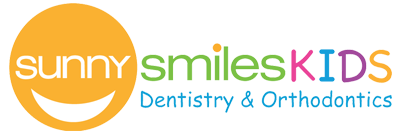Orthodontic treatment for teens is different from that of children. Teens, unlike children, have fully developed teeth and have shed most of their primary teeth. The teenage years are the best to correct teeth defects and have a lifetime of healthy and attractive teeth.
Teen years ranging from 12 to 16 are best for orthodontic treatment. It’s no coincidence that the majority of people across the USA receive orthodontic treatment at that stage. It’s popular since most teens have already fully developed permanent teeth. Sunny Smiles Kids offers orthodontics across Del Mar. They offer exclusive services for teens.
For teens, the primary concern of pursuing orthodontics is to improve the aesthetic value of their teeth and faces. However, it’s notable that the treatment improves your teens’ oral health and overall health. Properly aligned teeth enhance proper chewing, are easy to clean, and effectively prevent tooth cavities and gum disease. Furthermore, well-aligned teeth are less prone to wear, cracking, chipping, and other dental-related defects.
Orthodontic treatment procedure
Once you visit our top-rated orthodontist, they perform a thorough examination and create a personalized treatment plan. A professional dentist recommends an ideal orthodontic appliance for your treatment.
Since teens lead some very engaging lifestyles such as sports, academics, partying, and socialization, they have diverse treatment options.
You choose the treatment option that perfectly fits your lifestyle and matches your personal preference. Treatment options include clear braces, metal braces, gold braces, and clear aligners such as clarity and Invisalign. All these treatment options are highly effective in giving you a perfect smile resembling your favorite celebrities.
Time for treatment varies across different teens because it depends on various factors such as the correction needed and teen discipline. The treatment process takes about six months for individuals with less affected teeth.
On the other hand, badly damaged teeth require a longer time for a complete restoration, usually 16 – 20 months. The time you take to recover also depends on your discipline. If you adhere strictly to the dentist’s instructions, you are sure of less treatment time.
Getting started
- Schedule your free consultation with the dentist near you. You inform the dentist of your smile goals. The dentist also assesses your current dental structures to correctly determine the treatment options to pick.
- Complete a patients form
- The dentist creates a personalized treatment plan detailing the selected treatment options, the schedule, and the pricing.
- Treatment starts to give you a perfect smile.
Types of orthodontics services
- Metal braces
Metal braces are the oldest form of braces. Although the traditional metal braces were bulky, the modern ones are sleek and lighter. They also look good and are more comfortable.
- Clear braces
They are also known as ceramic braces. They are similar to metal braces but lack brackets. They are made of whitish ceramic material to resemble the natural color of teeth. Teens like clear braces since they blend exceptionally well with their smiles. On the flip side, they are fragile and a bit expensive. Most dentists do not recommend them for most teens.
- Gold braces
The gold braces are robust like metal braces and delicate like ceramic braces. Their unique color blends excellently with your beautiful smile.
- Lingual braces
Lingual braces are best to straighten your smile. The brackets have been placed tactfully on the back of the teeth and thus are not visible. They are the best option for image-conscious patients.
- Clear aligners
The clear aligner system comprises fully customized clear trays. The aligners are almost invisible and removable. They are made of soft plastic and comfortable, thus creating zero friction and preventing abrasions in the mouth.
Your teen changes the aligner weekly. If the teen wears the aligners for about 20-22 hours daily, their teeth slowly slide into the desired position. Clear aligners are best for minor to reasonable orthodontic issues.
Signs of orthodontic issues
- Protruding teeth
- Misaligned teeth
- Irregular loss of primary teeth
- Difficulty when biting and chewing food
- jaws and teeth that have misaligned with the face
Advantages of a straight smile
- Enhanced self-esteem and confidence
- Easy to clean teeth
- Improves biting and chewing
- Critical in preventing tooth decay and cavities
- Tolerant to wear and tear, chipping, cracking, and tooth trauma
- Minimizes the chances of developing gum disease, which can lead to fatal consequences
Conclusion
Orthodontics for teens is an investment for many years to come. Teens respond quicker to orthodontic treatment, and thus it’s best to conduct the procedure during their teenage years. The quick response leads to a shorter treatment time and thus minimal cost. Besides, Sunny Smiles Kids is a top-rated orthodontist near you, and they offer a free consultation with the dentist.
